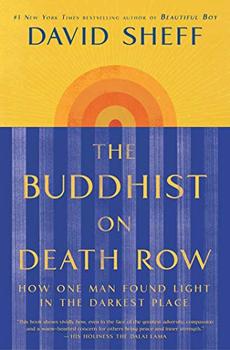Summary | Excerpt | Reviews | Beyond the Book | Readalikes | Genres & Themes | Author Bio

Critics' Opinion:
Readers' Opinion:
First Published:
Aug 2020, 272 pages
Paperback:
Jun 2021, 272 pages
 Book Reviewed by:
Book Reviewed by:
Valerie Morales
Buy This Book
He feared that he'd never see her again. And he still couldn't get her question out of his head: What is wrong with me?
* * *
Jarvis was nineteen when he arrived at San Quentin. When he went out to the yard for the first time, he saw men playing basketball on courts with sagging, netless rims. Other cons lifted weights, sat across from one another on benches and played checkers or cards, or clustered in groups talking. Races did not mingle.
When a stranger approached, Jarvis was wary until the man dropped the name of Halifu, an inmate he'd met at Los Angeles County Jail. Halifu was physically imposing but spoke like a professor. He was some kind of revolutionary. He bent Jarvis's ear, talking about the historical oppression of African Americans, quoting
W. E. B. Du Bois, Marcus Garvey, Angela Davis, and Malcolm X and educating Jarvis about the Black Panthers and an "organization" called the Black Guerrilla Family. Halifu said the BGF, cofounded by W. L. Nolen and George Jackson, had been created in response to a spate of killings of African American inmates in US prisons. He said that Jarvis needed to join the revolution and began calling him Askari, the Swahili word for "soldier."
Later, when Halifu learned that Jarvis was heading to San Quentin, he sent word to "comrades" there, including the man who approached him on the yard. The prisoner, whose Swahili name was Fuma, had been in the San Quentin contingent of the Black Panther Party when Jackson was killed in the prison in 1971. Fuma introduced Jarvis to other "revolutionaries," including teachers responsible for educating "kezi," the men who aspired to join the BGF. A blackboard was set up on the yard and classes of sixty or so kezi gathered for instructions. Those who'd never gone to school were taught to read and write, and all of them learned about black nationalism and the class struggle.
That political education justified and focused Jarvis's rage. Angry and alienated, he was primed for radicalization—and to connect to something bigger than himself. In the name Black Guerrilla Family, "family" was the operative word for young men like Jarvis, as its members embraced them like fathers and brothers.
Jarvis and the other kezi knew that only a handful of them would be accepted into the BGF. They were told, "Many are called but few are chosen." Jarvis was determined to be one of the chosen few. He trained with diligence and commitment, and, as a former BGF member recounted, Jarvis was among a handful of dedicated soldiers who made the cut. They were initiated in a solemn ceremony at which they were given pins with the five-pointed red Communist star to wear on their lapels. Then they were awarded "fraternal membership" in the gang. A commander said, "There are new dragons among us. They have risen into the ranks of jamaa (family)."
Two years later, in 1985, a BGF member broke from the organization's leadership and planned a series of attacks on guards. Court records show that the first target was to be a veteran sergeant, thirtyeight-year-old Howell Dean Burchfield, who was rumored to be supplying weapons to the Aryan Brotherhood, a rival prison gang. According to multiple BGF members, Jarvis wasn't told about the plot because of a rift he'd had with the planner of the attack. As a result, he didn't know what was coming the night of June 8 of that year: Sergeant Burchfield was taking the nightly prisoner count, a mundane chore that he'd repeated hundreds of times. An inmate called to him and asked for a light for his cigarette. When Burchfield approached the man's cell, the prisoner stabbed him with a makeshift spear, severing his pulmonary artery. By the time help arrived, the guard was dead.
That night and the following day, those suspected of involvement in the killing were moved from South Block's C-section, where they'd been confined, to the Adjustment Center. Jarvis apparently wasn't a suspect, because he was left alone. Prior to the murder he'd had unusual freedom of movement as a "tier tender," and that privilege continued. When other prisoners in the block were locked in their cells, Jarvis swept and mopped tiers, delivered dinner trays, and scrubbed supply room walls.
From The Buddhist on Death Row: How One Man Found Light in the Darkest Place by David Sheff. Copyright © 2020 by David Sheff. Reprinted by permission of Simon & Schuster, Inc. All rights reserved.





The House on Biscayne Bay
by Chanel Cleeton
As death stalks a gothic mansion in Miami, the lives of two women intertwine as the past and present collide.

The Flower Sisters
by Michelle Collins Anderson
From the new Fannie Flagg of the Ozarks, a richly-woven story of family, forgiveness, and reinvention.

The Funeral Cryer by Wenyan Lu
Debut novelist Wenyan Lu brings us this witty yet profound story about one woman's midlife reawakening in contemporary rural China.
Your guide toexceptional books
BookBrowse seeks out and recommends the best in contemporary fiction and nonfiction—books that not only engage and entertain but also deepen our understanding of ourselves and the world around us.